In Valerie Stivers’s Eat Your Words series, she cooks up recipes drawn from the works of various writers.
The Soviet science-fiction masters Arkady (1925–1991) and Boris Strugatsky (1933–2012) had that particular Russian knack for making humor out of tragedy, the first but not last reason their work transcends genre. Famous in Russia, the brothers are known in the West for the 1972 novel Roadside Picnic, which the Andrei Tarkovsky film Stalker is based on. Roadside Picnic and another of my favorites, The Dead Mountaineer’s Inn (1970), are thrilling on the plot level the way best sellers should be, but they also have a depth of social commentary and layered metastructuring that are revelatory of the Soviet world the brothers found themselves in—and relevant to our times as well. To this end, I supped with the brothers Strugatsky, making some of the classic dishes mentioned in their books. Readers should be forewarned that the following article contains spoilers, though it offers blini and caviar in return.
To return to sardonic wit: Roadside Picnic is the story of earth after extraterrestrial contact, with the conceit that the aliens came, did something mysterious, and then left, leaving a handful of sites contaminated with toxic but possibly useful junk. As one character explains, it’s as if “a car pulls off the road into the meadow and unloads young men, bottles, picnic baskets, girls, transistor radios … A fire is lit. Tents are pitched. And in the morning they leave. The animals, birds and insects that were watching the whole night in horror crawl out of their shelters. And what do they see? An oil spill, a gasoline puddle, old spark plugs and oil filters strewn about … A roadside picnic.” The human survivors devote themselves to studying the alien detritus, but they’re like the insects and animals of the anecdote: unable to understand it. Roadside Picnic’s portrait of humanity isn’t particularly flattering, and it acts as a spoof of the grandiose alien-contact science fictions of the era. As another character remarks, “Somehow this isn’t at all how I envisioned it.”
This is clever, but where it becomes quietly deep is in the struggles of ordinary people to cope with forces beyond their control. The book’s hero, Redrick Schuhart (a character whose name evokes both gumshoes and true hearts), is a “stalker,” a person who enters the alien contamination zone illegally in order to bring back artifacts to sell on the black market. He’s also a decent human being and family man, and he finds himself with an unwilling ringside seat to human frailty as his clients project their dreams onto the potential loot. Red’s ordinary life concerns—parenthood, an ailing father, making a living—are rendered surreal and nightmarish by the situation around him, created both by human evil and the horrors of the zone. In the book’s dark final chapters, he makes a doomed search for a legendary alien artifact, a “golden sphere” that grants wishes. Unlike his traveling companions, Red reaches the artifact, and the book’s last words are his wish: “HAPPINESS, FREE FOR EVERYONE, AND LET NO ONE BE FORGOTTEN.” The brothers let the reader decide if he has succumbed at last to delusion or if this represents a triumph of his humanity.
The Dead Mountaineer’s Inn has similarly bleak concerns, though since it’s a detective romp set in a remote mountain chalet, such matters are handled with devastating lightness. The book is at first glance a police procedural in which the detective Peter Glebsky (“bureaucratic crimes, embezzlement, forgery, fraudulent papers”), a righteous man taking a much-deserved ski vacation, is lured into investigating a murder and series of bizarre events at the local inn. The atmosphere is as stylized and wonderful as a game of Clue, with snowdrifts and billiards and a buffet that contains “two delftware tubs filled with vegetable soup and bouillon.” But the book’s true genius is to break all the rules of genre fiction, not once but twice. First, the answer to the mystery is that half the characters are aliens, that we are dealing not with crime but with science fiction. And second, Glebsky’s actions, while “right” according to the mores of his job and society, result in the aliens’ awful and pathetic deaths. In the epilogue, Glebksy writes that he’s haunted years later by the events at the inn and that “many times during boring shifts, over the course of solitary walks or just sleepless nights, I’ve thought over everything that happened and asked myself a single question: did I do the right thing, or not?” He concludes, “I act properly, I obey God, the law and the people, but my conscience bothers me.” The reader is reminded that Soviet Russians understood the power of ideology, and a genre change can affect a person’s understanding of right and wrong.
To honor this particular mixture of comfort read and Russian tragedy, I made some of the generic foods mentioned in the books, which are intended to be futuristic in their lack of specificity, but did them in the style of Russian comfort food. There are two soups on the buffet at the titular Dead Mountaineer’s Inn, one a “bouillon” and the other a “vegetable soup,” as well as “caviar” and “roast beef.” For the bouillon, I took a classic recipe for clear beef broth from A Present to a Young Housewife, by Elena Molokhovets, a Russian cookbook published in the 1860s from which most Russian home cooking has descended. The book turns simple ingredients into delicious meals through the use of refined techniques. To this end, I boiled and skimmed the broth three times, then separated the meat from the broth, strained the broth, washed the pot, recombined the ingredients, and set them to simmer for two more hours, straining again before serving. For the vegetable flavorings, I used celery, carrot, and leek, raw and in large chunks, then also a handful of the same veggies, sautéed in oil. Necessary? I’m not sure, but the broth was delicious.
A Russian “vegetable soup” is a borscht, obviously, a dish the brothers mention by name in Roadside Picnic, in which it’s the name of the local greasy spoon. My usual borscht is, like the bouillon, an insane Molokhovets version with many extraneous-seeming steps. To simplify, I tried a vegetarian borscht from a Ukrainian cookbook that used some grandma-style techniques, like incorporating the liquid the beans were cooked in, using a “slurry” of broth and fried flour to thicken the soup, and seasoning with tomato paste. It wasn’t as refined as the one I make, but I think nine out of ten guests trapped in a remote ski chalet after an avalanche in the company of aliens would have liked it.
And then there was the “caviar.” I am delighted to suggest it be eaten on Russian blini, which I have finally learned to make correctly after years of trying. The restaurant way of serving caviar on a blin is to present a dollop on a pancake similar to an American one, but bite size. The Russian home-style way is to pile the caviar on the more usual type of blini (like French crepes) folded into fourths to make them finger food. My recipe is from my former Russian nanny’s grandmother; it has no measurements and relies on taste testing to get the seasoning right. But it’s sensually satisfying to make (who doesn’t want to take “a fistful” of sugar straight from the bag?) and has made blini an easy morning go-to for me instead of a special-occasion food.
Lastly, I made the roast beef The Dead Mountaineer’s Inn’s human characters were always noshing on (the alien characters didn’t eat, but people just assumed they were alcoholics). I did this despite it not being a particularly Russian dish and despite that making it correctly has been a mystery for me on par with landing an alien spaceship. To sear or not to sear? Do you really need a meat thermometer? How about an electric knife? The recipe I chose is a slow-cooked version from Bon Appétit, which I tried with the classic (and appealingly cheap) top round cut of beef. The garlic-rosemary-rub flavoring was perfect, and the roast was juicy. But as forewarned, without the electric knife, I wasn’t able to slice it paper thin, and the results were chewy.
So while the meal was mostly excellent, some mistakes were made. As a cook, even a cooking-from-literature one, I’m only human. I console myself that in the Strugatskys’ world, that’s an important thing to be. Redrick Schuhart’s next-to-final words in Roadside Picnic, addressed to an imaginary audience of aliens, are: “Look into my soul, I know—everything you need is in there. It has to be. Because I’ve never sold my soul to anyone! It’s mine, it’s human!”
I believe any good cook can say the same.
Blini and Caviar
4 eggs
handful of sugar (see photo)
small palm-full of salt (see photo)
2 cups flour (adjust according to number of people to feed)
3 1/2 cups milk (adjust by sight)
olive oil
1 stick of butter, melted and set aside
Set out a plate for the finished blini.
Crack four eggs in a large mixing bowl. Add a full handful of sugar and about the amount of salt that fits in the smallest pocket of your cupped hand (see photo). Whisk, slowly and gently, until the mass is opaque and about doubled in volume, generating as little foam as possible.
Add the flour in stages, stirring with a wooden spoon until the mixture is sticky and just barely combined. Then add two cups of the milk in stages, whisking till smooth. At this point, you need to be judging the consistency of the batter, which should be just slightly thicker than liquid, about like melted ice cream. Continue to add milk until you reach the desired consistency. (At this point, the batter can be set aside in the refrigerator until you’re ready to make the blini, which should be eaten as soon after making as possible.)
When you’re ready to fry the blini, test the batter. Set a ten-inch skillet or crepe pan over a medium-high flame (a click or two hotter than you’d use for ordinary pancakes), pour in a little bit of olive oil, and tilt the pan to coat. When the oil is hot, use a large ladle and pour out about three tablespoons of batter to make a test pancake. Immediately shake or swirl the pan to achieve the thinnest possible coating of batter. The first pancake is usually a little misshapen; this is nothing to worry about. Fry until the batter is set and the edges are beginning to dry, then flip, lifting the edges a little with a fork and then using your fingers to peel the pancake off the skillet. Fry the other side until it begins to golden. This should take about a minute per side.
Taste the test pancake, and evaluate it for thickness and for seasoning. It should be nearly paper thin, cooked all the way through, and tender. If it browns before cooking through, add more milk. If it’s bland, add another handful of sugar and another palm-full of salt. Continue to adjust the batter and make test pancakes until they taste right.
Fry the rest of the batter in the same manner. Don’t add more oil to the skillet. Brush each finished pancake liberally with melted butter, and stack them on a plate kept next to the stove. If the pancakes seem like they’re cooking too slowly, turn up the heat. It can be difficult for beginners to spread a thin enough layer of batter over the pan without leaving holes in the blini, but don’t worry; a few holes aren’t a big deal if the taste is right.
Serve the pancakes warm, folded into quarters, and topped with a large dollop of caviar.
Clear Beef Consommé (Yellow Bouillon #1)
(This recipe is adapted from A Present to a Young Housewife, by Elena Molohovets. I have translated it from the Russian.)
3 lbs of beef, bones and meat
15 cups cold water
2 1/2 tsp salt
2 carrots, peeled
1 parsley root, peeled
1/3 celery root, peeled
2 tbs butter
1 leek
1 sprig of parsley
1 sprig of celery leaves
1 frond of leek greens
Rinse the beef, then put it in a large pot or Dutch oven. Cover with nine cups of water. Make a note of the height of the water (you can mark it on a straw or wooden skewer), then add six more cups of water, cover, and bring to a boil.
When the water boils, turn off the heat, and skim the foam, using an ordinary soup spoon. Reboil and reskim two more times in the same manner.
While waiting for the water to boil, divide the carrots, parsley root, celery root, and leek into two equal portions. Chop one portion medium fine, then sauté in butter over medium heat until limp and beginning to brown. Reserve.
When the beef has boiled three times, take it off heat. Remove the meat with a large slotted spoon, holding it above the pot and rinsing it with several ladles of bouillon to wash off the foam. Set aside. Remove all chunks of meat using this technique. Strain the liquid through a sieve lined with two layers of cheesecloth into a separate vessel. Wash the pot, then return the meat and the strained broth to the pot. Add the raw vegetables, the cooked vegetables, and a packet made of the sprig of parsley, the sprig of celery greens, and the sprig of leek tied together.
Cover loosely, and bring to a simmer. Let cook for two to three hours, until the liquid has boiled down to the mark you made in the beginning. Let cool somewhat, and strain again through a sieve lined with a paper towel or clean napkin that has not been washed with detergent.
Season to taste.
Vegetarian Borsht
(This recipe is adapted from Ukrainian Cuisine and Folk Traditions, by Lidia Artiukh. Serves eight as a main course.)
10 cups water
3–4 medium beets, about 1 lb, peeled and sliced into matchsticks
1 carrot, peeled and sliced into matchsticks
1 root of parsley or parsnip, or half a celery root, peeled and sliced into matchsticks
3 tbs oil
2 small potatoes, peeled and cubed
1/2 medium-size cabbage, shredded on a mandoline
1 cup dried beans
5–6 dried mushrooms
2 tsp salt
2–3 tbs flour
2 tbs tomato paste (or more, to taste)
2 tsp salt, plus more as you go
3 tbs dill, chopped very fine
3 tbs parsley, chopped very fine
4 hard-boiled eggs, peeled and halved
Soak the beans overnight. Drain and rinse. Place in a small saucepan, and add cold water to a depth of about an inch above the level of the beans. Cover, and bring to a boil. When the water is boiling, set the lid ajar halfway, turn down to the barest possible simmer, and cook until tender, adding more liquid as necessary. The time this will take can vary from forty minutes to several hours depending on the age and quality of the beans. Reserve beans and cooking liquid.
While the beans are cooking, soak the mushrooms in hot water for at least twenty minutes. Drain, chop, and sauté in a tablespoon of oil. Set aside.
Using the same skillet you used for the mushrooms, add another tablespoon of oil, then sauté the matchsticks of carrot, parsnip, and other root until brown. Repeat with the matchsticks of beet.
Bring the ten cups of water to a boil, add the cubed potato and salt, and cook until almost tender, about fifteen minutes. Add the beans in their cooking liquid, the sautéed vegetables, the mushrooms, and the cabbage, and cook for ten more minutes, until the cabbage is tender.
Dry fry the flour in a skillet over medium-high heat until golden. Cool and remove to a bowl. Make a slurry by adding a ladle of broth to the bowl and mixing until the flour is combined. Add the mixture to the soup.
Season the borscht with tomato paste according to your taste. Then add the dill and parsley. Serve each bowl with half a hard-boiled egg.
Rosemary-Crusted Roast Beef
(Recipe adapted from Epicurious.)
1 top round roast, 3.5–4 lbs
Kosher salt
freshly ground pepper
6 garlic cloves, pounded to a paste
3 tbs rosemary, chopped fine
3 tbs olive oil
Season the roast generously on all sides with salt and pepper. Mix garlic, rosemary, and three tablespoons of olive oil in a small bowl, then plaster the mixture evenly on all sides of the roast. Cover and chill for at least twelve hours and up to two days.
Preheat the oven to 200. Place the roast on a wire rack set inside a rimmed baking sheet. Roast until an instant-read thermometer set into the thickest part of the meat reads 118–120 (medium rare), about two to two and a half hours. Let rest for an hour. Cut into very fine slices with an electric knife.
Valerie Stivers is a writer based in New York. Read earlier installments of Eat Your Words.
from The Paris Review http://bit.ly/2FISgiq
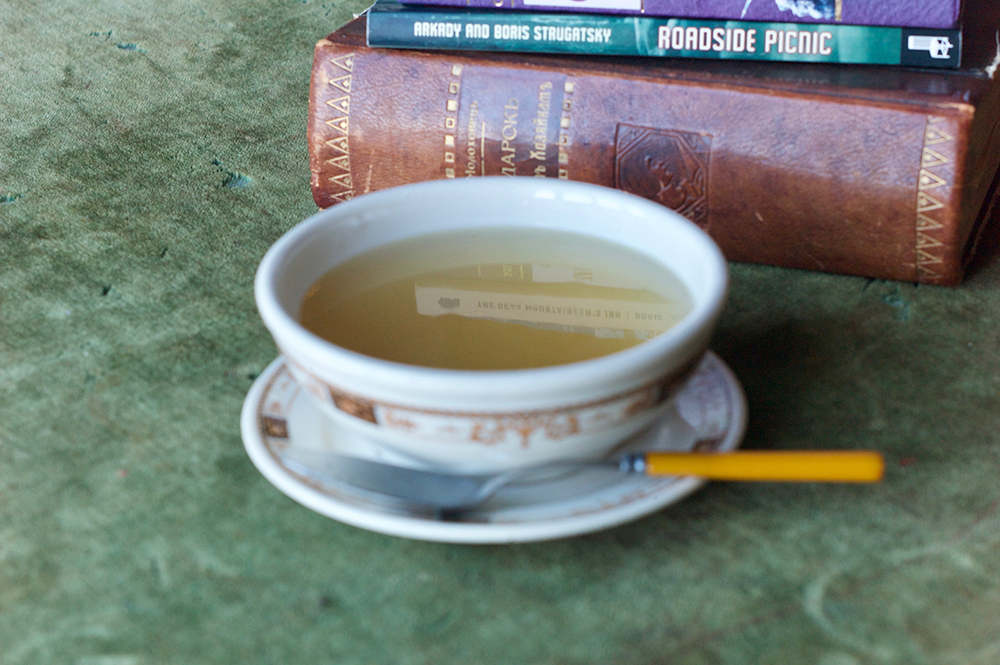
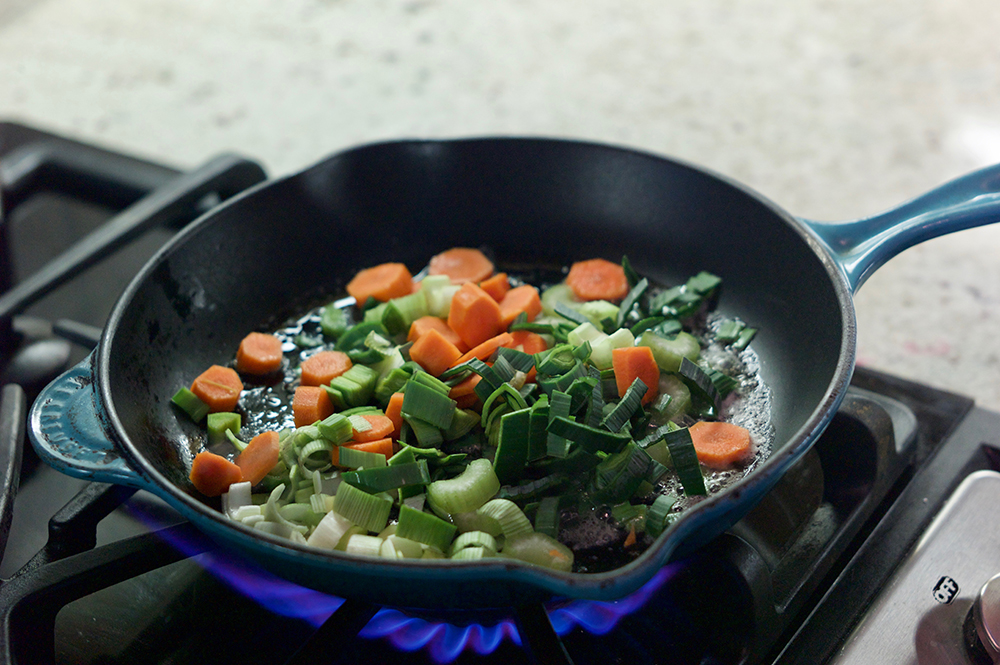
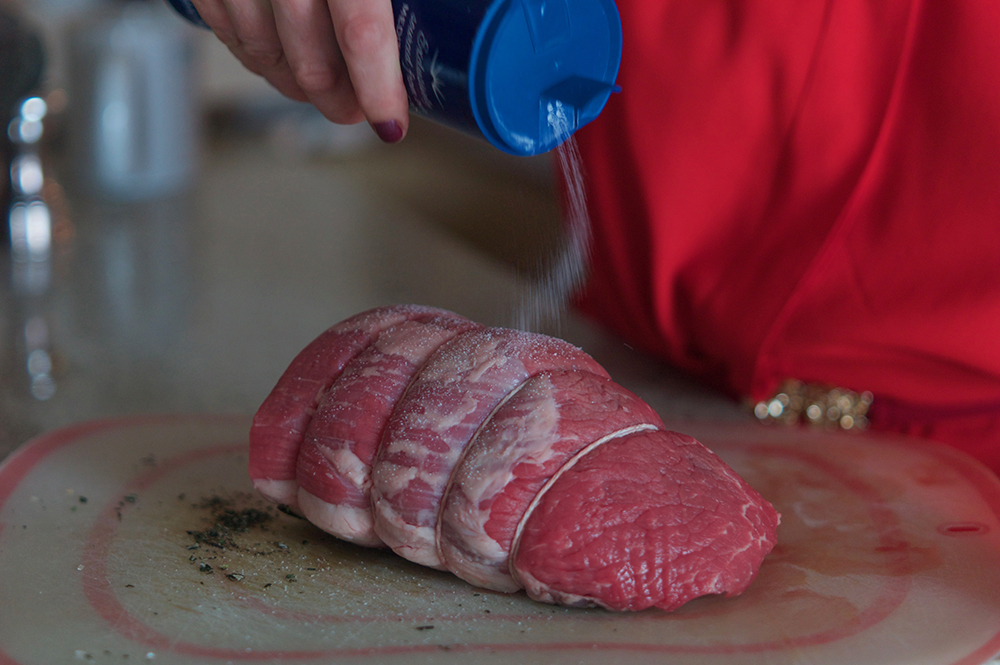
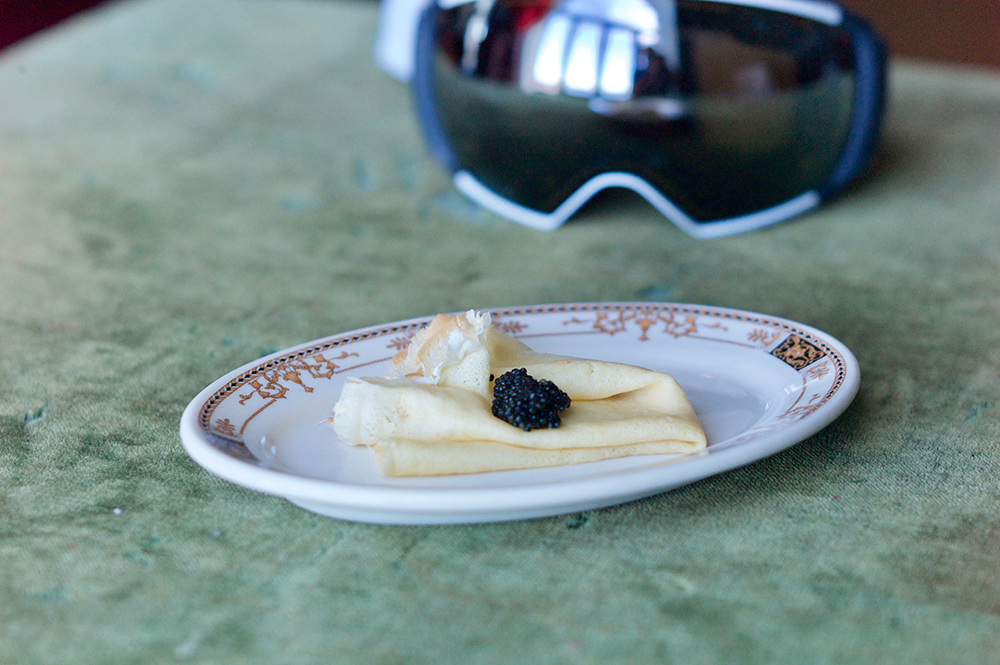

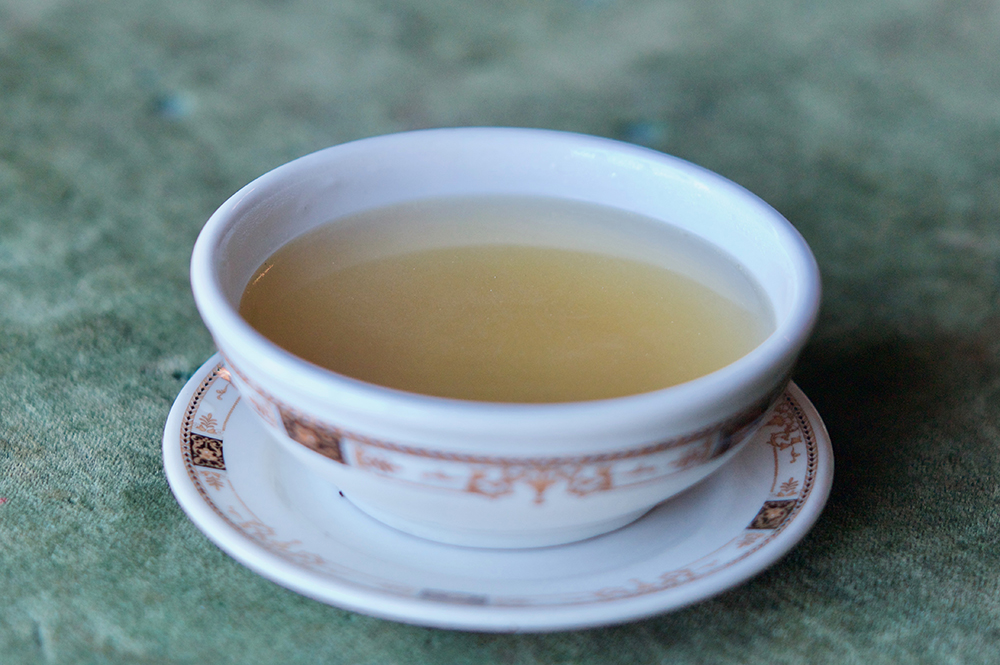
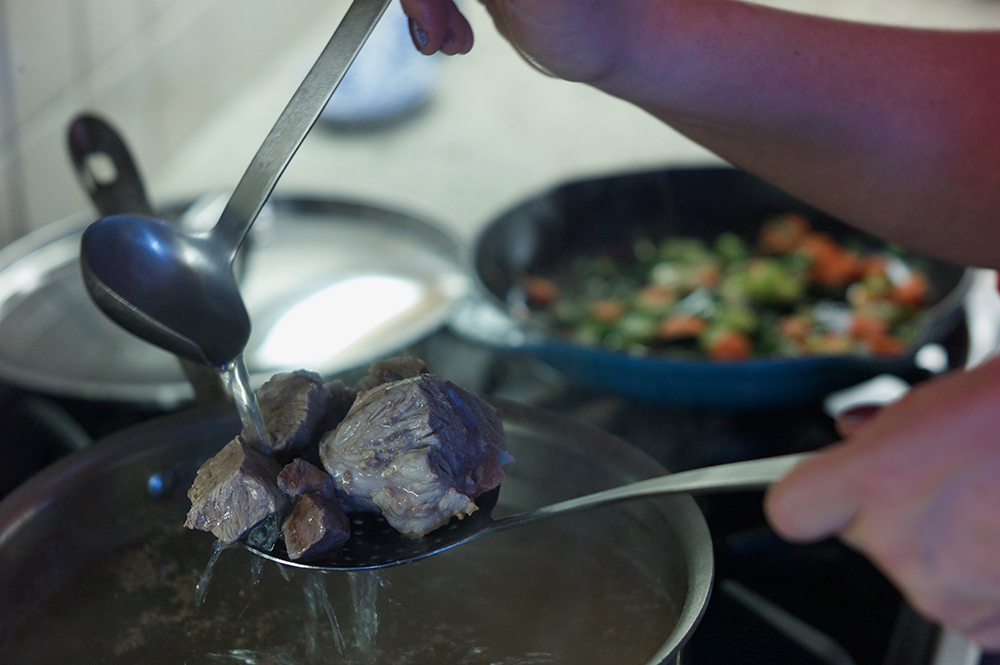
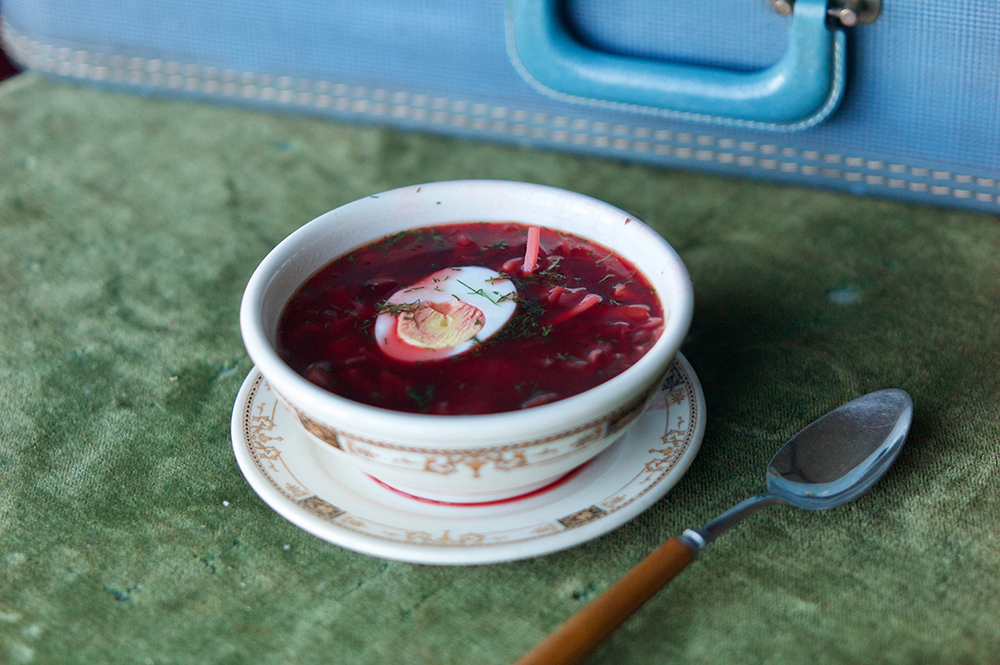
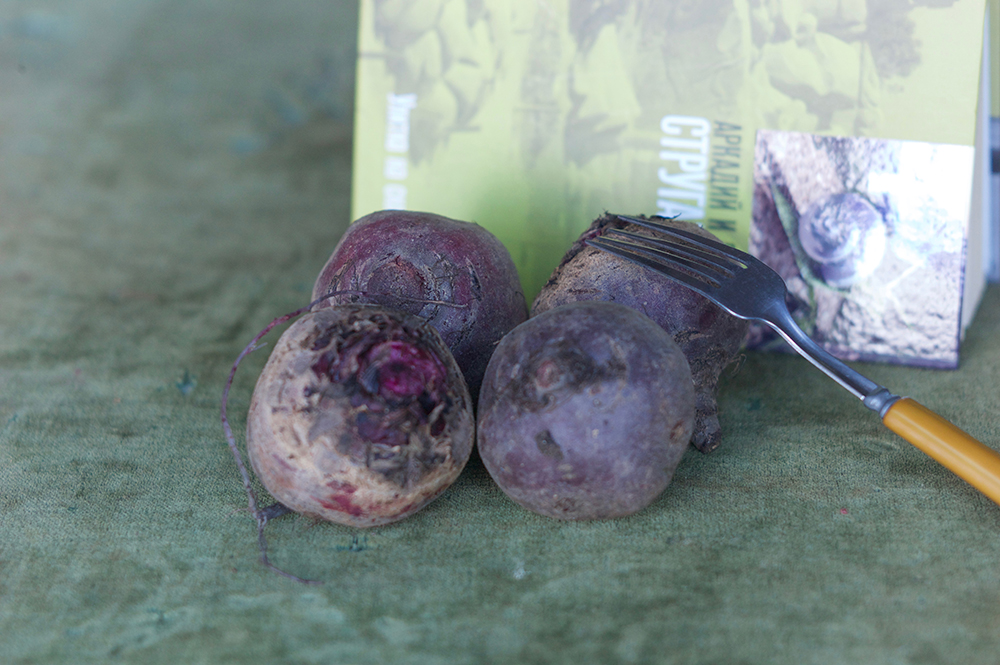
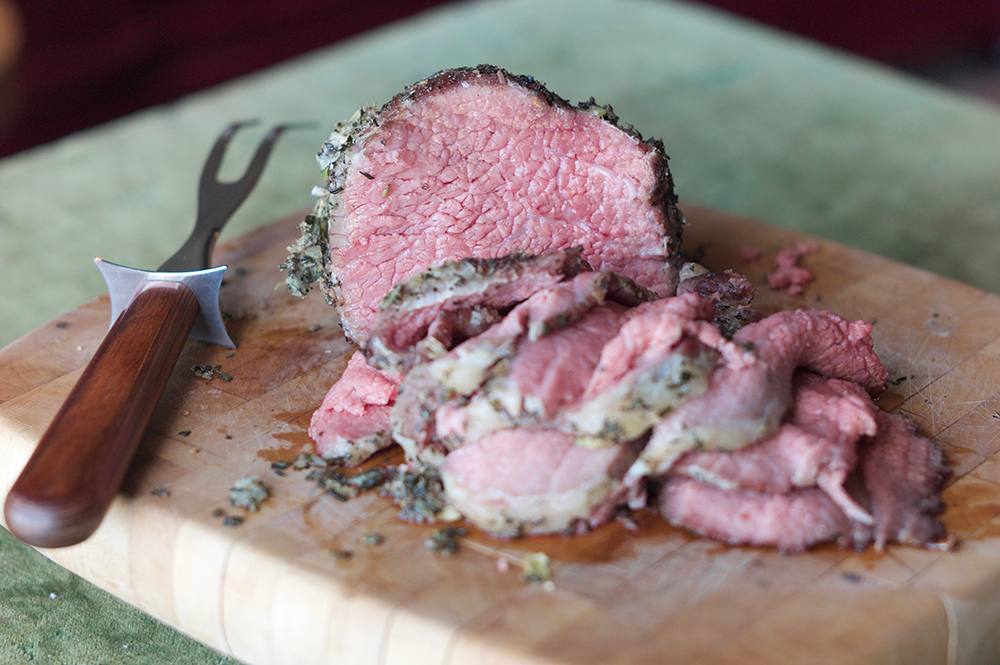
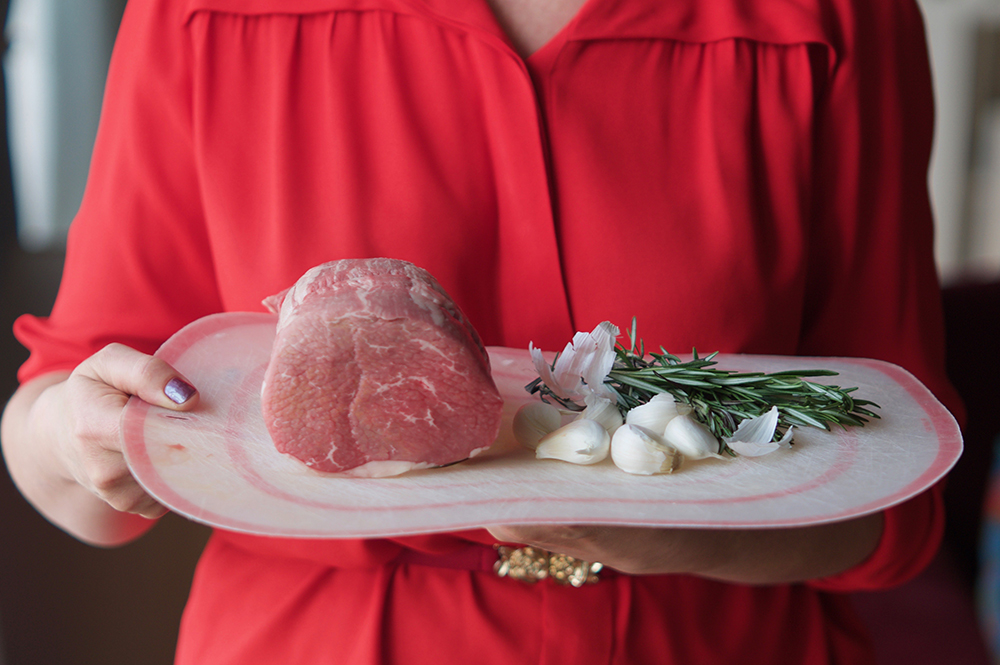
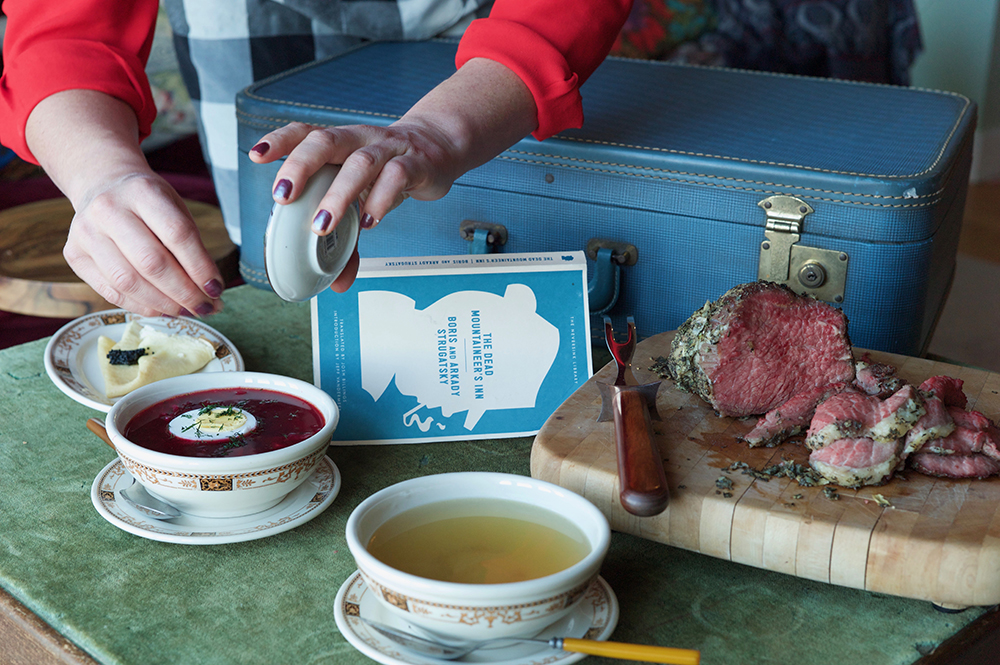
Comments
Post a Comment